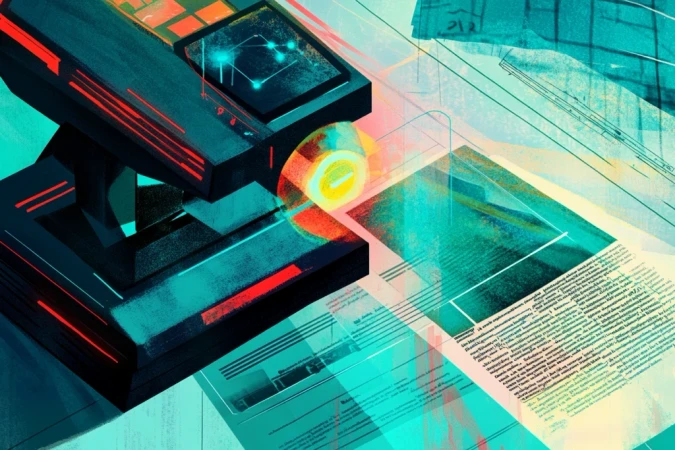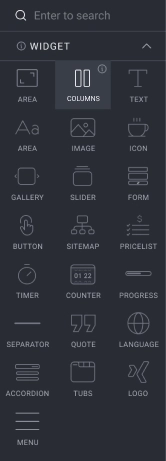As artificial intelligence becomes more entwined with creative processes, distinguishing between human and machine-generated content is trickier than ever. How effective are AI text detectors at spotting the difference? As these tools spread across various fields—from schools to studios—their strengths and weaknesses become crucial knowledge for us all. Let’s check what these technologies can really do.
What is AI detection?
Mixed results when AI Text Detectors analyze a fragment of the US Constitution - in one case the text was marked as AI-generated, in another as entirely human-created.
Ever wondered how we can tell if a story, article, or even a photo was created by a computer? That’s where AI detection comes in. It’s all about using technology to figure out if what we’re seeing or reading was made by a person or a machine. When it comes to writing, it means distinguishing a human’s touch from an AI’s output.
What are AI text detectors?
Imagine having a tool that reads through an essay or a blog post and tells you if it was written by a person or popped out of a program like ChatGPT. That's what AI text detectors do. They help ensure students are doing their own work to make sure the content we read is genuinely original.

What do AI detectors look for?
Ever read something that just didn’t sound right? Maybe the words kept repeating or the sentences felt stiff—like no one you know would actually talk that way. That’s what AI detectors are on the lookout for. They check if a piece of writing might have been cooked up by a computer rather than a person.
- Repetition of words: Ever notice how some writings drone on with the same words over and over? That’s a dead giveaway for AI. Humans tend to mix things up a bit more with their word choices.
- Unnatural choice of words: Sometimes, AI picks weird synonyms or phrases that a typical person wouldn’t use, making the text seem out of place.
- Stiff, unnatural writing style: If the writing lacks the natural flow and variety we expect in human-written text, it might just be the handiwork of AI.
These tools are like detectives, searching through text for clues that something might not be the genuine article.
When creating content in BOWWE, take advantage of the AI Text Generator which offers handy pre-set prompts tailored for various categories. Not only does this streamline your writing process, but it also allows for customization. With the BOWWE AI Text Generator, you're free to go beyond the basics—craft your own prompts just like you would in ChatGPT, tailoring your content to perfectly fit your needs.
Are AI text detectors accurate?

It sounds cool to have a tool that can tell if something was written by a machine or a human, right? But here’s the catch: these detectors aren’t foolproof.
- They're kind of like guesswork: AI text detectors work on probabilities, not certainties. They use stats and patterns to make their best guess, but they can't capture all the nuances of human language. So, they're bound to get things wrong sometimes.
- As good as what they learn from: Just like us, these tools are only as good as what they learn. If they've been trained on a limited or biased set of data, they might not do well with text that's different from what they know.
- They can be biased: These tools can be unfair, especially to writings by people whose first language isn't English. This can lead to mistakes where genuine human writing is flagged as being penned by a robot.
- It depends on the user too: The accuracy of these detectors also depends on how someone uses AI generators. If you just stick to basic prompts, the AI’s responses are more likely to be spotted. But if you’re really good at crafting complex prompts, you might trick the detector into thinking the response is human-written.
Despite their helpfulness in spotting possible AI-written content, relying only on these detectors to make final decisions isn’t a great idea. They're best used alongside a human’s judgment, particularly in situations where being fair and accurate is super important.
Can AI detectors detect humanized text?
AI detectors are pretty good at picking up the usual signs of computer-generated text—like perfect grammar that never misses a beat. But what if the AI starts throwing in a few curveballs? Like a misplaced comma or a slightly off-kilter sentence that sounds more human than your average robot talk? That's when these detectors can get tripped up. Adding these human quirks can make AI-generated text hard to spot, often sneaking past the algorithms that were supposed to catch them.
Is it worth using tools such as AI text detectors?

In places like schools and universities, where teachers use these tools to check for cheating, AI detectors can sometimes create more problems than they solve. Imagine being a student who gets accused of cheating because the tool mistook your genuinely crafted essay for something a machine spit out. Not fair, right? That’s because these tools aren't perfect—they're guessing based on patterns, and sometimes they guess wrong.
Moreover, while they’re great at flagging text that just repeats the same old stuff, they don’t really nail down where the text came from. They're helpful when you want to clean up and double-check your work, but you can't rely on them to always tell you exactly if something was written by a computer or a person. For something more solid, it’s best to use several different detectors and compare what they say. This way, you get a fuller picture and a better chance at knowing if you’re dealing with AI or a real person’s thoughts.
Adding to this, it’s crucial to trust your own instincts and knowledge too. If something feels off about a piece of writing, even if the AI detectors give it a pass, it’s worth taking a closer look. Your understanding of the subject matter and your intuition about how ideas are typically expressed can be just as valuable as any technological tool. Combining AI insights with your own judgment is the best approach to ensure accuracy and maintain fairness.
What is the best AI detector?
Trying to pick the best AI detector can feel like a chore, but it really boils down to what you need it for, how much text you’re dealing with, and how much you’re willing to spend. Let me give you the lowdown on some of the top choices out there:
- PlagiarismCheck.org offers robust AI detection capabilities, excelling with models like ChatGPT and Claude. It can analyze up to 170 pages at a time, with subscriptions starting at $5.99 for 20 pages. For those needing only the AI detection feature, custom plans are available.
- GoWinston.ai provides a comprehensive suite of detection tools, including for AI content and deepfake images. It offers a 7-day free trial, with premium plans beginning at $12/month for 80,000 words. Note, it may struggle with accurately identifying content from Claude.
- HiveModeration.com offers a free tool capable of analyzing up to 8,192 characters per check and includes a Chrome extension. However, it also faces challenges in correctly identifying Claude-generated content.
- GPTZero.me specializes in content from various AI models including GPT-3, GPT-4, and Claude, but has noted difficulties with Claude. It features a free basic plan allowing up to 10,000 words per month and offers premium plans starting from $10/month.
- Originality.ai is highly popular for its rigorous AI detection capabilities, particularly with its Turbo 3.0 model recommended for those requiring near-perfect accuracy. Though it has no free plan, you can test its service with 50 credits obtained by installing their free Chrome extension.
Each of these tools has its strengths and limitations, making it essential to consider your specific requirements before selecting an AI detector. Whether you need detailed analysis for academic integrity, content creation verification, or other professional uses, these tools provide various options to suit different needs.
How can you detect AI writing (by yourself)?

Figuring out if a piece of writing came from a computer or a human can be tricky, especially since AI is getting pretty good at mimicking us. But, there are a few signs that can tip you off:
- Weirdly complicated sentences: You know those sentences that are technically correct but just sound too stiff or overly complex? That’s a classic AI move.
- Repeating themselves: If you notice the same phrases or words popping up way too much, it’s likely AI behind the wheel.
- Ignoring the now: AI articles might miss the mark on current events or lack the context that makes content feel relevant to today’s world.
- Factually off: Sometimes, AI might sound convincing but get the facts all wrong. It’s good at sounding right, but it’s not always telling the truth.
- Just skimming the surface: AI tends to stick to the surface, often missing deeper analysis or insights that a human expert might offer.
- Topic hopping: If the text starts wandering off track or can’t seem to stick to the main point, you might be dealing with an AI.
Need a unique image for your next project in BOWWE? Use the AI Image Generator to effortlessly create visuals that align with your vision. Simply choose the style and characteristics you desire, and let BOWWE's AI bring your ideas to life. Whether you're looking for something modern, classic, or completely out of the box, the AI Image Generator makes it easy to integrate stunning visuals directly into your BOWWE projects.
How to bypass AI detectors?
While the ethical implications of bypassing AI detectors should be considered, there are legitimate reasons one might want to prevent their content from being flagged as AI-generated, such as avoiding bias against AI-assisted content.
Here are some techniques to make AI-written text appear more human-like:
- Add personal anecdotes or unique insights: Including personal stories or uncommon insights can lend a human touch that AI struggles to replicate.
- Write like you speak: Write as if you’re chatting with a friend. A casual, conversational style can make even the most robotic-sounding AI come across as just another human.
- Use paraphrasing tools: To alter sentence structures and word choices, paraphrasing tools can help diversify the language used, making it less detectable.
- Provide real facts and statistics: Make sure your facts are straight. Accurate and verifiable details add credibility to your work and anchor your text in reality.
- Do your own research on the topic before using AI: Before you even start with AI, make sure you really understand your topic. The better you know your subject, the better you can steer the AI away from generic responses and towards content that sounds like it’s coming from an expert.
AI text detectors - summary
AI text detectors are getting smarter all the time, but they’re far from perfect. It’s important to keep our expectations realistic. We can't rely solely on technology to tell the difference between what’s written by a human and what’s not. We’ve got to stay sharp and use our own judgment too. Not every piece of awkward or slightly off writing comes from a computer. Humans are quite capable of creating content that doesn't hit the mark on their own 😉
Detecting AI writing - FAQ
Can AI texts be detected?
Detecting AI-generated texts is feasible with the current technology, but it is not always 100% accurate. Detectors can identify many hallmarks of AI writing, but sophisticated AI can often mimic human nuances closely enough to evade detection.
What is the best AI text detector?
The best AI detector varies depending on your specific needs—accuracy, ease of use, volume of content, and budget considerations all play a role. Tools like PlagiarismCheck.org and Originality.ai are among the top choices for their robust detection capabilities.
Can you trust AI detectors?
While AI detectors provide valuable insights, they should not be solely relied upon to determine the origin of a piece of content. Their results need to be interpreted with caution and supplemented with human judgment.
How to make a text undetectable by AI?
To avoid detection by AI detectors, incorporate elements that are uniquely human, such as idiomatic expressions, personalized anecdotes, and a natural conversational tone. Also, ensure that the content varies in structure and style.
How to make ChatGPT text not detectable?
To make text generated by ChatGPT less detectable, refine the prompts to generate more nuanced responses, use paraphrasing tools to alter the output, and blend the AI-generated content with original human-written text to add authenticity and reduce detectability.

Karol is a serial entrepreneur, e-commerce speaker m.in for the World Bank, and founder of 3 startups, as part of which he has advised several hundred companies. He was also responsible for projects of the largest financial institutions in Europe, with the smallest project being worth over €50 million.
He has two master's degrees, one in Computer Science and the other in Marketing Management, obtained during his studies in Poland and Portugal. He gained experience in Silicon Valley and while running companies in many countries, including Poland, Portugal, the United States, and Great Britain. For over ten years, he has been helping startups, financial institutions, small and medium-sized enterprises to improve their functioning through digitization.










